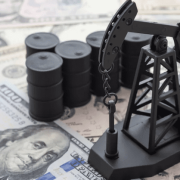⚠️ IMPORTANT LEGAL DISCLAIMER:
The information provided on this page is for general informational purposes only and does not constitute legal, financial, or investment advice. Oil and gas laws, mineral rights regulations, and royalty structures vary significantly by state and jurisdiction. While we strive to provide accurate and up-to-date information, no guarantee is made to that effect, and laws may have changed since publication.
You should consult with a licensed attorney specializing in oil and gas law in your jurisdiction, a qualified financial advisor, or other appropriate professionals before making any decisions based on this material. Neither the author nor the publisher assumes any liability for actions taken in reliance upon the information contained herein.
Political changes significantly influence various sectors of the economy, and the oil and gas industry is no exception. The intricacies of oil and gas royalty policies are particularly sensitive to shifts in political power, regulatory changes, and evolving governmental priorities. These policies, which determine the financial compensation landowners receive for the extraction of resources on their property, can undergo substantial transformations based on the prevailing political landscape. This article delves into how political changes shape oil and gas royalty policies, exploring the dynamics between government decisions and industry practices.
Understanding Oil and Gas Royalty Policies
Before delving into the impact of political changes, it is crucial to understand the basics of oil and gas royalty policies. These policies dictate the payments landowners receive from companies that extract oil and gas from their property. Typically, royalties are a percentage of the revenue generated from the extracted resources. The specific percentage, terms of payment, and other contractual details are outlined in leases between landowners and extraction companies.
Royalty policies vary significantly across different regions and countries, influenced by a myriad of factors including resource availability, market conditions, and political frameworks. They play a critical role in balancing the interests of landowners, extraction companies, and governments, ensuring that resource extraction is economically viable and beneficial for all parties involved.
Historical Context of Political Influence
Historically, political changes have always played a role in shaping oil and gas royalty policies. In many countries, the discovery of oil and gas reserves has often led to significant political and economic shifts. Governments have periodically revised royalty policies to reflect changing political ideologies, economic needs, and societal expectations.
For instance, during periods of nationalization, governments often increase their control over natural resources, leading to higher royalty rates and stricter regulations. Conversely, during phases of deregulation and privatization, policies might favor extraction companies with lower royalty rates and more lenient terms to encourage investment and development.
The Role of Elections and Political Parties
Elections and changes in political parties can lead to significant shifts in oil and gas royalty policies. Different political parties often have varying ideologies and policy priorities, which can influence their approach to natural resource management. For example, a party with a strong environmental agenda may implement stricter regulations and higher royalty rates to ensure sustainable resource extraction and increased revenue for public coffers. On the other hand, a party focused on economic growth and job creation may reduce royalty rates to attract more investment in the oil and gas sector.
The influence of political parties extends beyond national governments to regional and local levels, where policies can also vary significantly. Local elections can result in changes to state or provincial royalty policies, reflecting the unique priorities and concerns of different communities.
Regulatory Frameworks and Government Agencies
Government agencies play a pivotal role in the implementation and enforcement of oil and gas royalty policies. These agencies are often directly influenced by the prevailing political climate and the priorities of the governing political party. Changes in leadership within these agencies can result in shifts in policy enforcement, regulatory focus, and the interpretation of existing laws.
For example, an agency under a pro-business administration might adopt a more lenient approach to regulatory enforcement, resulting in favorable conditions for extraction companies. Conversely, an administration with a strong emphasis on environmental protection may empower agencies to implement stricter regulations and ensure that royalty payments are maximized to benefit public funds and environmental initiatives.
Economic Policies and Fiscal Measures
Political changes often bring about shifts in broader economic policies and fiscal measures that can influence oil and gas royalty policies. Governments may adjust royalty rates and policies in response to changing economic conditions, budgetary needs, and fiscal priorities. During times of economic downturn, governments might reduce royalty rates to stimulate investment and maintain industry activity. Conversely, during periods of economic prosperity, they might increase rates to maximize public revenue from resource extraction.
Fiscal measures such as tax reforms, subsidies, and incentives can also impact royalty policies. For instance, a government might introduce tax incentives for extraction companies to invest in new technologies or explore untapped reserves, which can indirectly affect royalty payments. Conversely, the removal of subsidies or the introduction of new taxes can alter the financial dynamics of royalty agreements.
International Influence and Geopolitical Factors
Oil and gas royalty policies are not only shaped by domestic political changes but also by international influences and geopolitical factors. Global oil prices, international trade agreements, and geopolitical tensions can all have a significant impact on how governments structure and adjust their royalty policies.
For example, a country heavily reliant on oil and gas exports might adjust its royalty policies in response to fluctuations in global oil prices to remain competitive in the international market. Similarly, geopolitical events such as sanctions, trade disputes, and international agreements can influence domestic policies, prompting governments to revise royalty rates and regulations to align with their strategic interests.
Environmental Policies and Sustainable Development
Environmental policies and sustainable development initiatives are increasingly influencing oil and gas royalty policies. Political changes often bring shifts in environmental priorities, with governments implementing new regulations and policies to address climate change, reduce carbon emissions, and promote sustainable resource management.
For example, a government with a strong commitment to environmental protection may introduce higher royalty rates for oil and gas extraction to fund renewable energy projects and environmental conservation efforts. Additionally, policies promoting sustainable development might require extraction companies to adhere to stricter environmental standards, which can impact the overall cost and feasibility of resource extraction and, consequently, royalty payments.
Public Opinion and Advocacy Groups
Public opinion and advocacy groups play a crucial role in shaping political decisions related to oil and gas royalty policies. Changes in political leadership often reflect shifts in public sentiment, with policymakers responding to the concerns and demands of their constituents. Advocacy groups, including environmental organizations, industry associations, and community groups, can influence political decisions through lobbying, public campaigns, and legal actions.
For instance, strong public opposition to a particular extraction project or practice can lead to political pressure on governments to revise royalty policies, implement stricter regulations, or even halt certain extraction activities. Conversely, industry advocacy groups might push for more favorable royalty terms to encourage investment and development in the sector.
Technological Advancements and Innovation Related to Oil and Gas Royalty Policies
Technological advancements and innovation in the oil and gas industry can also influence royalty policies, often in response to political changes. Governments may adjust policies to encourage the adoption of new technologies that improve extraction efficiency, reduce environmental impact, and increase resource recovery.
For example, advancements in drilling techniques, such as hydraulic fracturing and horizontal drilling, have revolutionized the industry, leading to significant increases in oil and gas production. In response, governments might revise royalty policies to reflect the new economic realities and ensure that public revenues keep pace with technological progress.
Case Studies and Real-World Examples
Examining real-world examples of how political changes have influenced oil and gas royalty policies provides valuable insights into the dynamics between politics and resource management. Several case studies highlight the diverse ways in which political decisions impact royalty policies and industry practices.
North America
In the United States, changes in federal and state administrations have led to significant shifts in oil and gas royalty policies. For instance, during the Obama administration, there was a strong focus on environmental protection and renewable energy, leading to the implementation of stricter regulations and higher royalty rates for extraction on federal lands. Conversely, the Trump administration prioritized energy independence and economic growth, resulting in deregulation efforts and more favorable terms for extraction companies.
Canada presents another example, where provincial governments play a key role in setting royalty policies. In Alberta, political changes have led to fluctuations in royalty rates, reflecting the varying priorities of different administrations. For instance, the New Democratic Party government implemented higher royalty rates and stricter regulations to increase public revenue and promote environmental sustainability, while subsequent conservative governments have sought to reduce rates to attract investment and stimulate economic growth.
Latin America
In Latin America, political changes have also had a profound impact on oil and gas royalty policies. Countries like Venezuela and Mexico have experienced significant shifts in their approach to resource management based on political ideologies and economic needs. In Venezuela, the nationalization of the oil industry and changes in government leadership have resulted in fluctuating royalty rates and regulatory frameworks, often influenced by broader political and economic challenges.
Mexico’s recent energy reforms under different administrations illustrate the dynamic interplay between politics and royalty policies. The liberalization efforts aimed at attracting foreign investment and modernizing the industry led to the introduction of competitive royalty terms. However, political changes and shifting public opinion have influenced subsequent administrations to revisit and adjust these policies to balance economic development and national interests.
Middle East
In the Middle East, political changes and geopolitical dynamics significantly impact oil and gas royalty policies. Countries like Saudi Arabia, the United Arab Emirates, and Iraq have experienced shifts in royalty rates and regulatory frameworks based on changing political leadership and strategic priorities. These changes often reflect the need to balance domestic economic development, international market competitiveness, and geopolitical considerations.
For instance, Saudi Arabia’s Vision 2030 initiative aims to diversify the economy and reduce reliance on oil revenue. As part of this vision, the government has adjusted royalty policies and introduced new regulations to attract foreign investment, promote technological innovation, and ensure sustainable resource management.
The influence of political changes on oil and gas royalty policies is multifaceted and complex, reflecting the dynamic interplay between government decisions, industry practices, and broader societal priorities. Understanding this relationship is crucial for stakeholders in the oil and gas sector, including landowners, extraction companies, policymakers, and advocacy groups.
As political landscapes continue to evolve, it is essential to monitor and adapt to changes in royalty policies, ensuring that resource extraction remains economically viable, environmentally sustainable, and beneficial for all parties involved. By recognizing the impact of political decisions on royalty frameworks, stakeholders can navigate the complexities of the oil and gas industry more effectively and contribute to the responsible and equitable management of natural resources.
Do you have any questions related to Oil and gas royalty policies? Feel free to reach out to us here.
Remember: This information is for educational purposes only. Consult qualified professionals for advice specific to your situation and jurisdiction.










